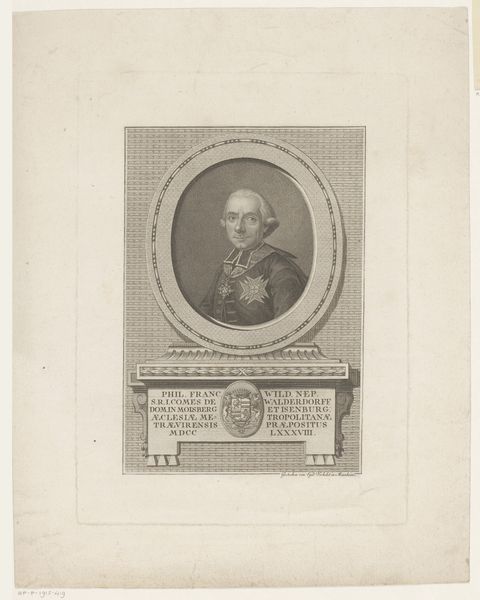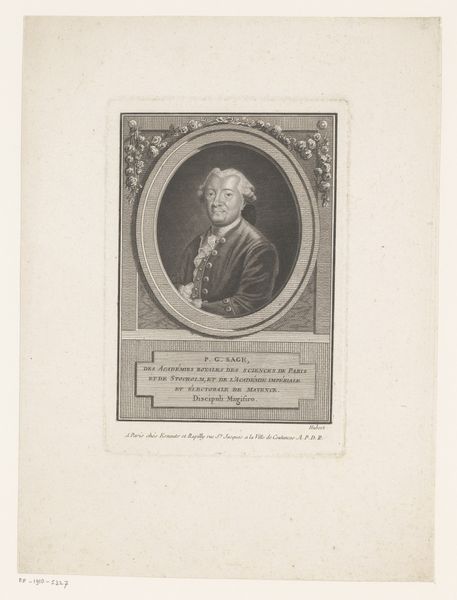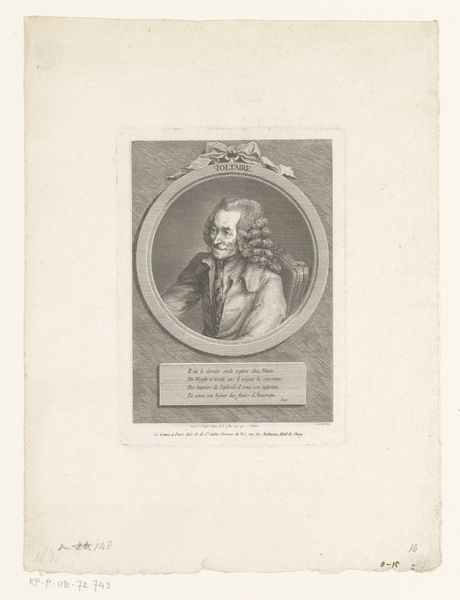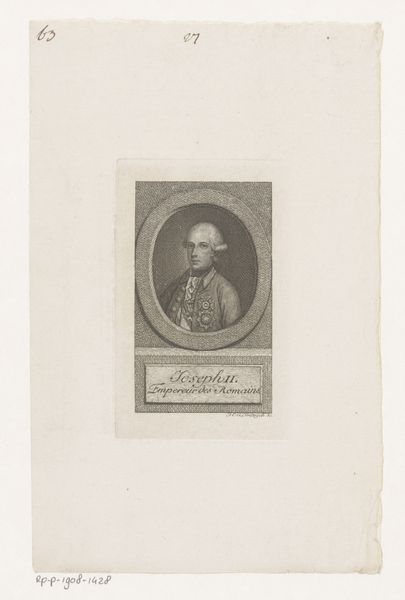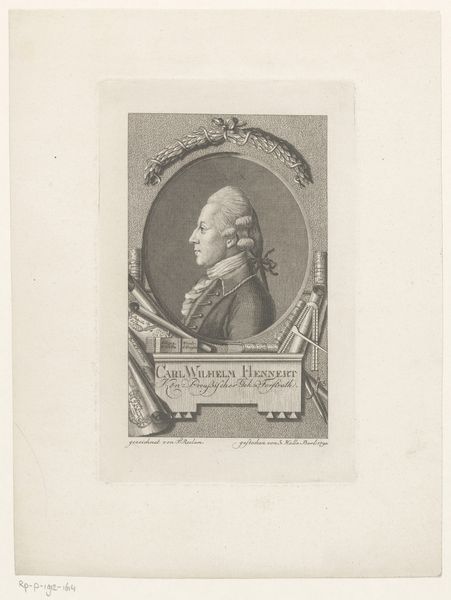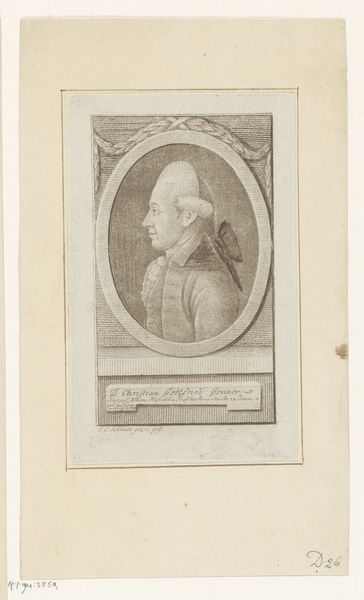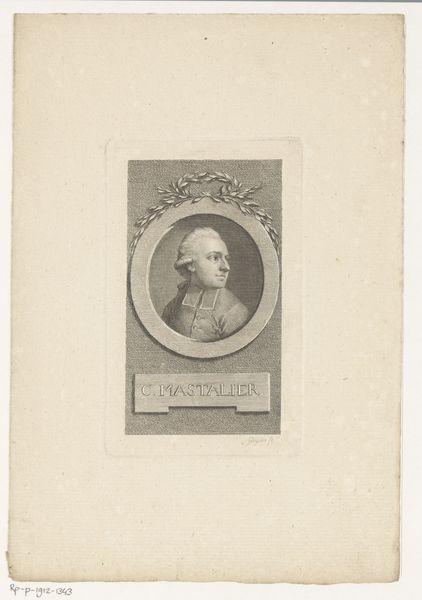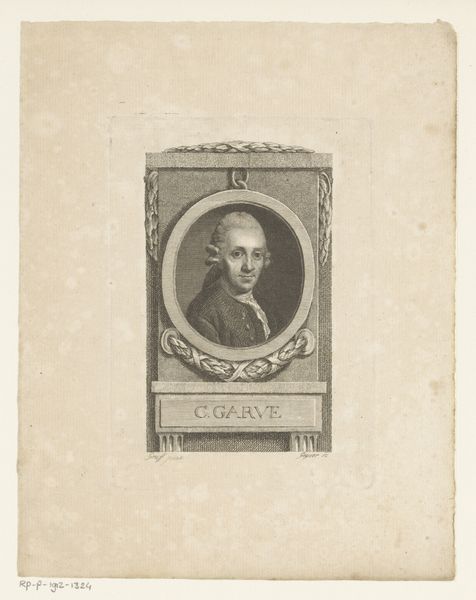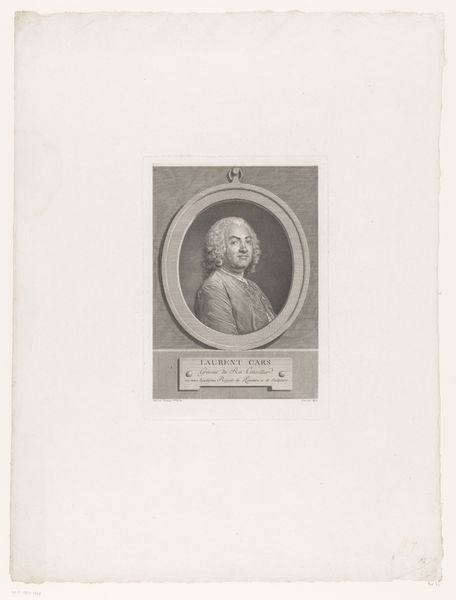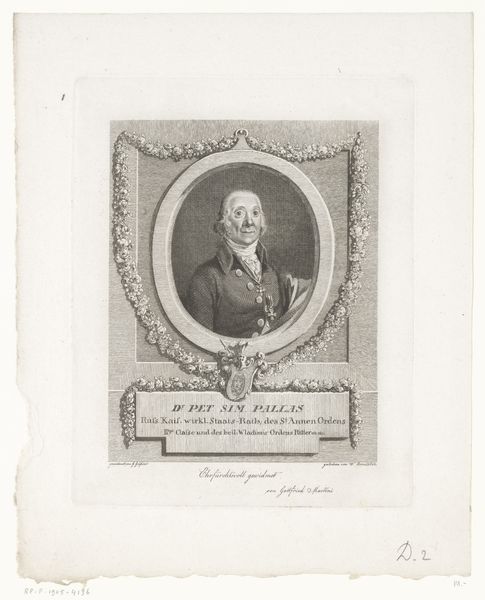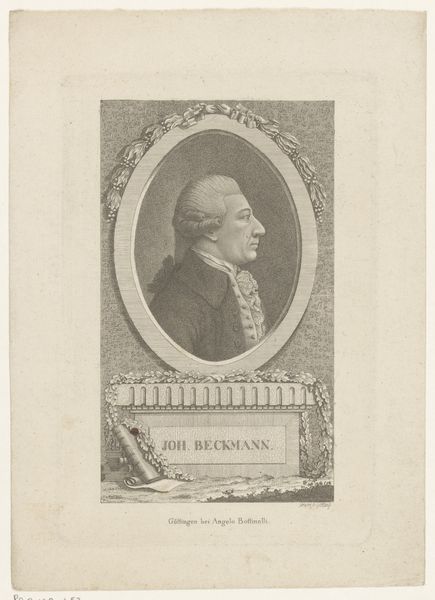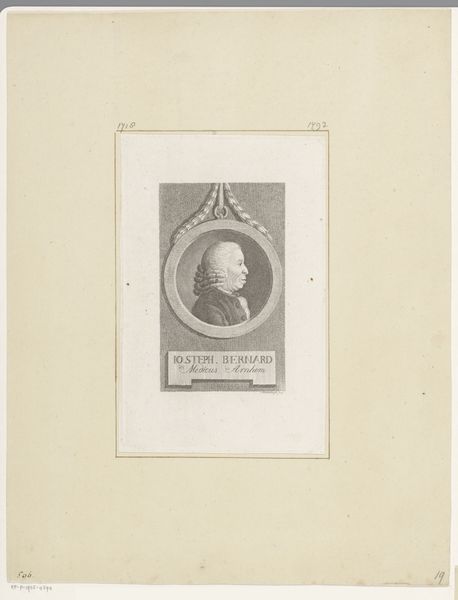
etching, paper, engraving
#
portrait
#
neoclacissism
#
aged paper
#
etching
#
old engraving style
#
paper
#
history-painting
#
academic-art
#
engraving
Dimensions: height 266 mm, width 185 mm
Copyright: Rijks Museum: Open Domain
Editor: Here we have Friedrich Wilhelm Gmelin's "Portret van Jozef II" from 1781, an engraving. It's quite formal. The composition, with that oval frame, feels almost like a classical coin. What resonates with you when you look at this work? Curator: The visual vocabulary speaks volumes. The laurel wreath framing Joseph’s image—a clear signifier of victory and eternal glory borrowed directly from Roman iconography—broadcasts power and legitimacy. Even the very act of portraying him within such a symbolic frame creates a deliberate association with past emperors. Consider, too, the heraldic emblem beneath, anchoring Joseph to the tangible earthly power of the Holy Roman Empire. Editor: So, it’s less about individual likeness and more about conveying the office he held? Curator: Precisely! But what about the slightly softened lines of the face, compared to the rigid framework surrounding it? Does this offer a glimpse into the *man* as distinct from the *emperor*? Does it humanize him, softening his perceived image? Editor: It does add a touch of humanity, I suppose, by softening the edges. I hadn't considered it that way. I guess these symbols worked then because viewers knew the visual language. Now we have to learn to read them. Curator: And what a rich language it is! Reflecting on such portraits helps us understand not only the historical figure, but also the complex web of cultural memory that shaped his era and, in turn, shapes our own understanding of power.
Comments
No comments
Be the first to comment and join the conversation on the ultimate creative platform.
